The Gumshoe Was a Lady
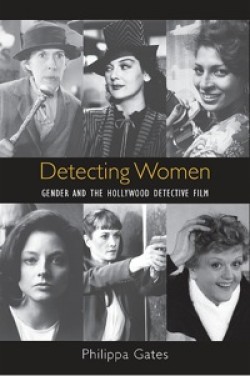 Not all film detectives have been hardboiled men. The woman gumshoe has a history, too.
Not all film detectives have been hardboiled men. The woman gumshoe has a history, too.
She has had many incarnations, from nineteenth-century fiction through hundreds of Hollywood films. Philippa Gates canvassed those earlier this year in Detecting Women: Gender and the Hollywood Detective Film (State University of New York Press).
And, like any detective on the case, as she tracked her quarry she encountered plenty of obstacles – several, in archives.
While it is popularly assumed that images of women have improved over time, Gates notes that the most progressive and feminist models of the female detective are in fact found in peripheral films, such as 1930s B mystery comedies and 1970s blaxploitation films. Such films sometimes even fantasized solutions to social anxieties about gender issues – such as, shouldn’t women be at home raising families, not chasing crime?
Were there more than a few detective heroines, at all? Fortunately, critics have become more aware of the variety of women’s film roles – in, for example, action serials of the 1910s and box-office smashes of the 1930s. That, says the associate professor of film studies at Wilfrid Laurier University, in Ontario, Canada, gives her hope that strong female protagonists and stars will be remembered.
Feminist film studies and gender studies have led to a reexamination of what presence women have had in Hollywood film. But Gates observes that to date scholars have tended to focus on either the “good girls” in “the woman’s film,” or on the “bad girls” – the “fallen women” – in films made before the introduction of the Production Code. (That was a set of moral guidelines – the “Hays Code” – with which the major film studios policed themselves between 1930 and the introduction of movie ratings in 1968.)
Gates looked, instead, at women who had filled the role of detective, generally considered a male preserve. She was particularly interested to see if models existed of admirable examples of woman as both successful professional and successful family member.
A difficult double!
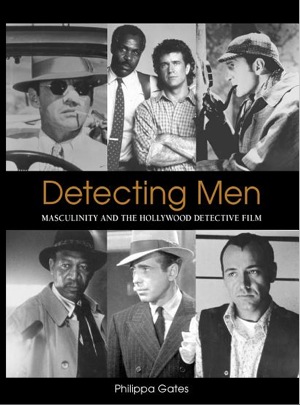 Gates has a history of watching the detectives. She earlier published Detecting Men: Masculinity and the Hollywood Detective Film (State University of New York Press, 2006). And in 2001 she edited, with Stacy Gillis, The Devil Himself: Villainy in Detective Fiction and Film (Greenwood Press). She has also written about the history of black screen detectives.
Gates has a history of watching the detectives. She earlier published Detecting Men: Masculinity and the Hollywood Detective Film (State University of New York Press, 2006). And in 2001 she edited, with Stacy Gillis, The Devil Himself: Villainy in Detective Fiction and Film (Greenwood Press). She has also written about the history of black screen detectives.
In Detecting Men, she expressed her surprise that, several years into the 21st century, few critics had taken much notice of how detective films, other than those of the film-noir variety, reflected attitudes about such social issues as gender identity and crime. She thought that odd, given that plenty of such analysis had been going on with respect to other “male” genres, such as war films, gangster films, and westerns.
She sought to make amends by looking closely at Hollywood golden-era detective films of the 1930s and 1940s, as well as at such recent ones as Die Hard, the Lethal Weapon series, The Usual Suspects, Seven, Devil in a Blue Dress, and Murder by Numbers.
She found that up to the early 1990s, detective films had focused on the masculinity of the hero. But then, they increasingly reassured viewers that law enforcement was on top of violent crime, thanks to forensic science and criminal profiling – the miraculous machinery of crime busting. In that way, whatever their thematic concerns, detective films reflected the tenors of their times – fixations, anxieties, self-confidences… She was able to see what films of particular eras said about such issues as what constituted masculinity.
Gates concluded that while detective films, they consistently reflected concerns of their times, such as what constitutes heroic masculinity, and how best to ensure law and order.
The dominant moods of those various time periods had implications not only for who got to play the lead roles, but what happened to others. So, she wrote, during the 1930s suave sophisticates – William Powell of the Thin Man series, for example – pushed tough guys like Humphrey Bogart into minor roles as “heavies,” but the 1940s brought hard times that smiled on the hard men because they were downtrodden, disillusioned, and conflicted and that suited them to the urban shadows of the film noir, wrote Gates.
Of course, she adds, few detectives have been other than white heterosexuals. What do we expect? Even in fantasy, heroes are almost always for the largest demographic groups. (There were, of course, classical Hollywood Asian detectives like Charlie Chan, whom Gates has written about, too.)
Now, in Detecting Women, Gates performs a similar analysis of gumshoettes. She first wrote about those in a chapter of Detecting Men. That led her to realize how many 1930s B mystery comedies had them, even though the cultural study of film had largely ignored them. She set about seeing what she could make of such subjects as the 1930s’ girl reporters-turned-detectives and amateurs like Nancy Drew, their disappearance in the 1940s, and the paucity of women in the film noir. Also of interest to her were the crime-fighting heroines of blaxploitation films of the 1970s, the female lawyers of 1980s thrillers, and so forth.
Contrary to the assumption that the Women’s Movement of the 1960s ushered in empowered women in Hollywood film, while classic Hollywood favored Victorian fuddy-duddies, “contemporary mainstream film does not necessarily advance themes any more progressive than those touted in classical Hollywood films more than half a century ago,” Gates writes. In fact, she says, before World War II, “Hollywood did offer progressive and transgressive (proto-)feminist role models.”
She points to a period from about 1929 to 1933, the Great Depression, when working women were often “hardboiled” because the struggles of the era led them to be less likely to settle for insecure marriage over more engaging independence.
Also quickly apparent, she says, was that skilled female detectives were rare who had also accomplished success as family women. The closest they got was settled spinsterdom – Jane Marple; domestic teenagerdom – Nancy Drew. Overwhelmingly, detective heroines struggled with that tension, from British nineteenth-century exemplars, on. (For that matter, not many male detectives have been model suburban husbands, either.)
The black, female crimefighters of blaxploitation films fared a little better: at least they could be self-determined, sexual, and women of action like such male counterparts as Shaft and Dirty Harry.
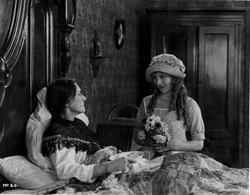
It is not hard to see what appeals to Gates. The woman detectives in those and other silent films may have been working on bloodless crimes, or at best bloody ones that had victimized family members, and lots of them had had to retire into happy marriages as rewards for their sleuthing success, but at least they had been given a shot.
Talkies did not soon improve the range of available characters, themes, and plots for woman detectives, but some wiggle room did develop for women as hardboiled and tough-talking as their male detective counterparts. That laid the ground for the tough women of blaxploitation, and perhaps even the “dyke dicks” of lesbian-themed films of the 1990s and 2000s.
Gates’s interest in detective films stems from childhood. “My father had raised me on re-runs of the 1960s Perry Mason television series, and my mother had introduced me to Agatha Christie,” she told Americana: The Journal of American Popular Culture, in 2009.
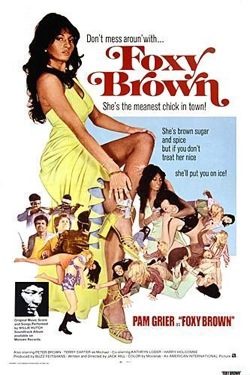
And yet it seems to her, she writes in her book, that “the detective film – whether featuring a sleuth or a criminalist, and crime in the Depression-era metropolis or twenty-first-century cyberspace – presents a fantasy of resolution for social anxieties concerning crime – and, more interestingly, gender.”
Inspired by the way Frank Krutnik’s In a Lonely Street (1991) had critically analyzed the film noir, she says, she decided to attempt “a recovery of the genre beyond noir,” taking account of how the genre had evolved since the 1930s. She completed her dissertation, then spent a couple of years revising and expanding it; the result was Detecting Men.
Arriving at her understanding of detective films has taken plenty of detective work, itself, Gates says in an interview. “I have to admit that I found it frustrating to locate films for this book project,” she says.
She relied heavily on the UCLA Film and Television Archive for viewing films, but she found that UCLA, like other archives, listed copies of 35mm prints they have but do not necessarily let people view because the prints are rare or damaged. “That means there might be films that I cannot find anywhere else, that I see listed in the catalogue, but still cannot view.”
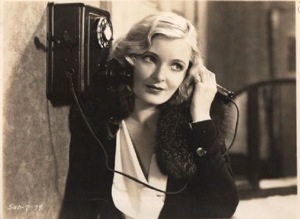
But she adds: “UCLA did let me pay to screen some 35mm archive prints on a Steenbeck flatbed where they keep their nitrate prints – films that were otherwise impossible to find and for that I am most grateful. I remember there was one film, Sob Sister, that was listed as a “unique” print and under “restricted use” – and therefore not necessarily viewable; the junior archivist who screened the film for me said “Take good notes as this may be the only time you are allowed to watch it.
“She also said that I was likely the first person to watch the film since it was screened in 1931. That gave me such a thrill to think that I was bringing to light, through my research, films that had been forgotten.
“Sometimes the archivists would watch the films with me – with their own set of headphones – and one told me that he really enjoyed the film – I think it was The Office Scandal – and didn’t know that they made films ‘like that’ – that is, with plucky detective heroines – ‘back then’ – that is, 1928.”
Gates, who is president of the Film Studies Association of Canada, is not done with the detective film. Most recently she has extended her research to the Hong Kong film noir of the late 1950s and early to mid-60s. Her essay on that subject appears in Transnational Asian Identities in Pan-Pacific Cinemas, a collection of essays that she co-edited with Wilfrid Laurier colleague, Lisa Funell, and that is set to appear (October 2011) from Routledge.
But Gates says she encountered research problems while researching the Hong Kong film noir, too: “In Hong Kong last year, I struggled again with the difference between archive catalogues and the reality of what you are allowed to screen. At the Hong Kong Film Archive, I was able to watch about 15 amazing films; however, they were the only films that were available for viewing from the 200 that were listed in the catalogue that I wanted to screen.
“It was actually for this very reason that I didn’t pursue this research project further. I wanted to compare the Hollywood Charlie Chan films to their Chinese remakes– there were seven or eight films made. However, I have been unable to locate any viewable prints of the films in Chinese archives.”
Calling all gumshoes.
– Peter Monaghan
Previous Post: More Books, Always More Books
Next Post: Archivist Guilty of Stealing and Selling National Sound Treasures





